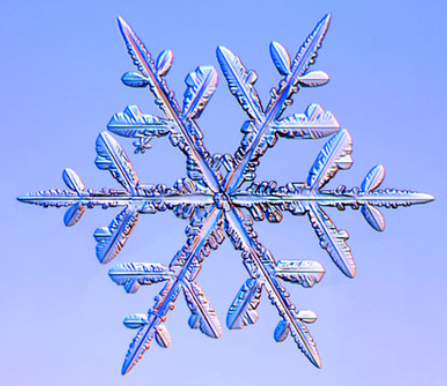The oldest and most beautiful Neptune mosaics are found in Tunisia:
"Triumph of Neptune", mid-third century
In Bardo National Museum, Tunis:
"Triumph of Neptune and Aphrodite", 2nd century
"Triumph of Neptune", late 2nd century
The Oera Linda Book is often ridiculed, because it suggests that the name Neptune is derived from NÉF.TÜNIS, "neef" being dutch/ frisian for cousin or nephew. See for example this fragment of 'Saved from the Flood ~ Oera Linda studies', at 51:09 min.
The following list shows that this word is not at all specifically Frisian, but must in fact be very old. Besides, the original meaning seems to have been more general: kinsman (or perhaps even also -woman).
nefi (kinsman) - icelandic
nevø - danish, norse
nevö - swedish
neef (cousin, nephew) - dutch
Neffe (son of brother or sister) - german
nephew - english
nepuotis - lithuanian
nõbu - estonian
nei - welsh
nip - albanian
nipote (niece, nephew, grandchild) - italian
nebot - catalan
nepos (grandson, descendant) - latin
anepsios (son of uncle or aunt) - old greek
nepodes (descendant) - old greek
nápat (grandson, descendant) - sanskrit
napat - old persian
nefa (grandson) - old english
nia - old irish
neve, neue (male kinsman) - low german, old dutch
neveu (nephew, grandson) - old french
nift (niece, granddaughter) - old english/ german
nift, nicht (niece, cousin, young girl) - frisian
neben (near, next, neighboring) - german
neven, neffen - dutch
http://www.etymonline.com/nephew
http://gtb.inl.nl/neef
http://etymologiebank.nl/neven
http://etymologiebank.nl/neef
"in alle talen konden er verschillende mannelijke bloedverwanten mee worden aangeduid" (in all languages a variety of male kinsmen could be denoted by it)
Relevant OLB-fragments:
[053/15] (Ottema, Sandbach p.75)
ANDA ALDER.GÁ.MVDE
THÉR RESTE EN ALDE SÉ.KÀNING.
STERIK WAS SIN NÔME
AND THA HROP VR SINA DÉDA WAS GRÁT.
THISSE ALDE ROB HÉDE THRÉ NÉVA.
WODIN THENE ALDESTE HÉMDE TO LUMKA.MÁKIA
BY THÉRE É.MVDE TO ÁST.FLÍ.LAND
BY SIN ELDRUM T.ÛS.
ÉNES WAS.ER HÉRMAN WÉST.
TÜNIS ÀND INKA WÉRON SÉKÀMPAR
ÀND JUST NW BI HJARA FÀDERJA
ANDA ALDER.GÁ.MVDE T.US.
AS THA JONGA KÀMPAR NW BI EKKORUM KÉMON
KÉRON HJA WODIN TO HJARA HÉR.MAN JEFTA KÀNING UT.
ÀND THA SÉ.KÀMPAR KÉRON TÜNIS TO.RA SÉ.KÀNING
ÀND INKA TO HJARA SKELTA BI.THÉR NACHT.

[056/21] (O., S. p.79)
NW KVMATH THA SKÉDNESE FON NÉF-TÜNIS
ÀND SIN NÉF INKA ÉROST RJUCHT VPPET PAT.
(read whole text till p.60, line 11)
Important fragment:
[058/27] (O., S. p.83)
SVME WILDET FRYA.S.BURCH HÉTA.
ÔRA NÉF.TÜNJA.
MEN THA MÁGJARA ÀND THA FINNA BÁDON
HÀT SKOLDE THÍR.HIS.BURCH HÉTE.
THÍR ALSA HÉTON HJA ÉN HJARAR DROCHTENA
ÀND VPPA THAM.IS JÉRDÉI WÉRON HJA THÉR LAND.
TO WITHER.JELD WILDON HJA TÜNIS ÉVG
AS HJARA KÀNING BIKÀNNA.
TÜNIS LÉT IM BILÉSA
ÀND THA ÔRA NILDON THÉRVR NÉN ORLOCH NE HÁ.
[069/01] (O., S. p.97)
THI KÀNING WAS FON TÜNIS OFSTAMED.
SÁ WI LÉTER HÉRDON.
MEN TILTHJU THA PRESTERA EN KÀNING WILDE HÀVE
THÉR ALDERLANGNE NÉI HJARA BIGRIP WÉRE
ALSA HÉDE HJA TÜNIS TO EN GODE VPHÉJAD.
TO ÀRGNISSE SINRA FOLGAR.
In the history of WODIN, INKA and TÜNIS, the word is NÉF, plural NÉVA, but later in the text, NÉVA is used as singular:

[209/28]
AL.RIK WÉRE ÁSKAR HIS NÉVA.
Al-rik was Áskar's kinsman.
~ ~ ~
 Summary of facts concerning the Neptune - NÉF.TÜNIS issue:
Summary of facts concerning the Neptune - NÉF.TÜNIS issue:
1. The most impressive depictions (i.c. mosaics) of Neptune were found in what is now Tunisia, less than 300 km. from the coastal city Tunis.
2. Tunis is thought to have been founded in the 2nd millennium BCE and the etymology is not clear.
3. The root-word nef/ nep (and varieties) exists in many languages, originally meaning kinsman, later mostly cousin, nephew or grandson.
4. Tunis, Teunis, Tony, Tonio is a man's name that could be over 3000 years old.
5. OLB describes a naval hero who was known as NÉF.TÜNIS, who sailed to the Mediterranean and who was later deified.
6. This OLB etymology was used as an example of ridiculous/ impossible etymology; as proof that OLB must be a joke or hoax.
My conclusions:
- The city Tunis could in fact have been named after a deified naval hero 'néf-Tünis'.
- The story and etymology as described in OLB is not impossible and no valid reason to reject its authenticity.
- Even if the explanation suggested in Oera Linda is not the actual/accurate etymology of 'Neptune', OL can still be an authentic copy of pre-Carolingian texts.








































